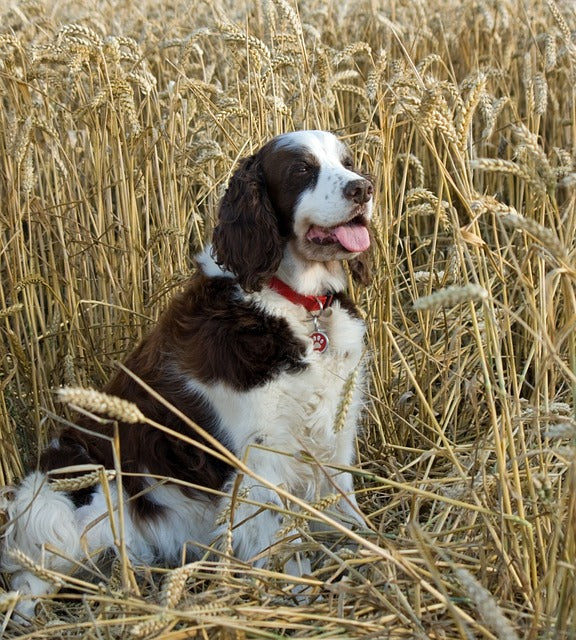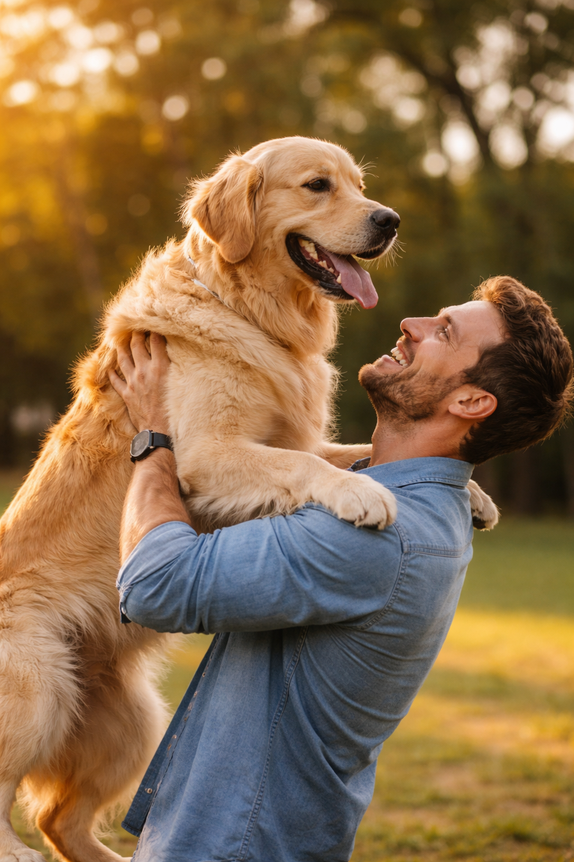Your One-Stop Shop for Everyday Essentials & Unique Finds
Guide to Hunting Dog Breeds:Heritage, Personality, & Fitness Needs
Hunting dogs have been loyal companions to humans for centuries, aiding in the pursuit of game and providing companionship along the way. Each breed brings its unique history, temperament, and exercise needs to the table. In this blog, we will delve into some of the top hunting dog breeds, exploring their backgrounds, characteristics, and what it takes to keep them happy and healthy.
1. Labrador Retriever
History
The Labrador Retriever originated from the island of Newfoundland, Canada, in the early 19th century. Initially known as the St. John's dog or Lesser Newfoundland, these dogs were used by fishermen to help retrieve nets and catch fish that escaped from fishing lines. English noblemen visiting Canada were impressed by their abilities and brought them back to England, where they were bred with other retriever types to enhance their hunting and retrieving skills. The breed was officially recognized by the American Kennel Club (AKC) in 1917.
Temperament
Labrador Retrievers are renowned for their friendly and outgoing nature. They are intelligent, eager to please, and highly trainable, making them excellent hunting companions and family pets. Labs are known for their patience and gentle demeanor, especially around children. Their social nature means they get along well with other dogs and pets.
Exercise Needs
Labradors are energetic dogs that require significant exercise to maintain their physical and mental health. Daily walks, play sessions, and opportunities to swim are essential for this water-loving breed. They excel in activities like fetch, agility, and obedience training. Regular exercise helps prevent obesity, a common issue in Labs, and keeps them mentally stimulated.
2. German Shorthaired Pointer
History
The German Shorthaired Pointer (GSP) was developed in Germany in the late 19th century as an all-purpose hunting dog. Breeders aimed to create a versatile dog capable of tracking, pointing, and retrieving game on land and in water. The breed is a result of crossing various pointers and hunting breeds, including the Spanish Pointer and various German scent hounds. The GSP was recognized by the AKC in 1930.
Temperament
GSPs are known for their high energy levels, intelligence, and versatility. They are affectionate and loyal to their families but can be wary of strangers. These dogs are highly trainable and thrive on mental and physical challenges. Their strong prey drive and keen sense of smell make them excellent hunters, but they also need ample exercise and mental stimulation to prevent boredom.
Exercise Needs
German Shorthaired Pointers require vigorous daily exercise to stay happy and healthy. They enjoy running, hiking, and swimming, and they excel in canine sports such as agility, flyball, and dock diving. Regular training sessions and puzzle toys can help keep their sharp minds engaged. Without adequate exercise, GSPs can become restless and may develop behavioral issues.
3. Beagle
History
Beagles have a long history dating back to ancient Greece, but the modern Beagle was developed in England in the early 19th century. They were bred primarily for hunting hare and rabbit, known as "beagling." Their small size, keen sense of smell, and excellent stamina made them ideal for this purpose. The AKC recognized the Beagle in 1885.
Temperament
Beagles are friendly, curious, and merry dogs. They are known for their loving and gentle disposition, making them great family pets. However, their strong sense of smell and inquisitive nature can sometimes lead them into trouble. Beagles are pack animals and tend to get along well with other dogs and pets. They are also good with children, making them a popular choice for families.
Exercise Needs
Beagles have moderate exercise needs but require regular activity to stay fit and mentally stimulated. Daily walks, playtime, and opportunities to use their noses, such as scent games or tracking exercises, are essential. Beagles can be prone to obesity, so maintaining a consistent exercise routine and monitoring their diet is crucial.
4. English Springer Spaniel
History
The English Springer Spaniel originated in England, where it was used as a flushing and retrieving dog. The breed's history dates back to the Renaissance period when spaniels were divided into land and water types. The English Springer Spaniel was officially recognized as a distinct breed in the early 20th century. They were bred to flush game birds from dense underbrush and retrieve them for hunters.
Temperament
English Springer Spaniels are known for their friendly, eager-to-please nature. They are highly intelligent, obedient, and affectionate, making them excellent companions for families and hunters alike. They have a strong work ethic and a natural instinct to hunt, which can sometimes lead to excessive curiosity. Springer Spaniels are good with children and other pets, although their high energy levels require supervision during playtime.
Exercise Needs
English Springer Spaniels need plenty of daily exercise to keep them happy and healthy. They enjoy activities like running, hiking, and swimming, and they excel in canine sports such as agility, obedience, and field trials. Regular training sessions and interactive play are essential to keep their minds sharp and prevent boredom. Without adequate exercise, Springer Spaniels can become restless and may develop behavioral problems.
5. Golden Retriever
History
The Golden Retriever was developed in Scotland in the mid-19th century by crossing the now-extinct Yellow Retriever with the Tweed Water Spaniel, among other breeds. The goal was to create a versatile hunting dog capable of retrieving game from both land and water. The breed was officially recognized by the AKC in 1925.
Temperament
Golden Retrievers are known for their friendly, gentle, and tolerant nature. They are intelligent, eager to please, and highly trainable, making them excellent hunting companions and family pets. Goldens are social dogs that get along well with children, other pets, and strangers. Their calm demeanor and patience make them ideal therapy and assistance dogs as well.
Exercise Needs
Golden Retrievers are active dogs that require regular exercise to maintain their physical and mental well-being. Daily walks, play sessions, and opportunities to swim are essential for this water-loving breed. They excel in activities like fetch, agility, and obedience training. Regular exercise helps prevent obesity, a common issue in Goldens, and keeps them mentally stimulated.
6. Vizsla
History
The Vizsla, also known as the Hungarian Pointer, has a history that dates back over a thousand years. The breed was developed in Hungary as a versatile hunting dog, capable of pointing and retrieving game. Vizslas were prized by Hungarian nobility for their speed, endurance, and keen hunting abilities. The breed was recognized by the AKC in 1960.
Temperament
Vizslas are known for their affectionate, energetic, and gentle nature. They form strong bonds with their families and are often referred to as "velcro dogs" because they love to stay close to their owners. Vizslas are intelligent and eager to please, making them highly trainable. They are good with children and other pets, but their high energy levels require an active lifestyle.
Exercise Needs
Vizslas are high-energy dogs that need plenty of daily exercise to stay happy and healthy. They enjoy running, hiking, and swimming, and they excel in canine sports such as agility, obedience, and field trials. Regular training sessions and interactive play are essential to keep their minds sharp and prevent boredom. Without adequate exercise, Vizslas can become restless and may develop behavioral issues.
7. Brittany
History
The Brittany, also known as the Brittany Spaniel, originated in the Brittany region of France in the 19th century. The breed was developed as a versatile hunting dog, capable of pointing and retrieving game. Brittanys are known for their excellent scenting abilities and their ability to work in both water and on land. The breed was recognized by the AKC in 1934.
Temperament
Brittanys are known for their friendly, intelligent, and energetic nature. They are highly trainable and eager to please, making them excellent hunting companions and family pets. Brittanys are social dogs that get along well with children, other pets, and strangers. Their high energy levels require an active lifestyle, and they thrive on regular mental and physical challenges.
Exercise Needs
Brittanys are high-energy dogs that need plenty of daily exercise to stay happy and healthy. They enjoy running, hiking, and swimming, and they excel in canine sports such as agility, obedience, and field trials. Regular training sessions and interactive play are essential to keep their minds sharp and prevent boredom. Without adequate exercise, Brittanys can become restless and may develop behavioral issues.
8. Weimaraner
History
The Weimaraner, also known as the "Gray Ghost," was developed in Germany in the early 19th century as a versatile hunting dog. The breed was created by crossing Bloodhounds with various German hunting dogs to produce a dog with exceptional tracking, pointing, and retrieving abilities. Weimaraners were prized by German nobility for their speed, endurance, and keen hunting instincts. The breed was recognized by the AKC in 1943.
Temperament
Weimaraners are known for their friendly, energetic, and intelligent nature. They form strong bonds with their families and are often referred to as "velcro dogs" because they love to stay close to their owners. Weimaraners are highly trainable and eager to please, making them excellent hunting companions and family pets. They are good with children and other pets, but their high energy levels require an active lifestyle.
Exercise Needs
Weimaraners are high-energy dogs that need plenty of daily exercise to stay happy and healthy. They enjoy running, hiking, and swimming, and they excel in canine sports such as agility, obedience, and field trials. Regular training sessions and interactive













Leave a comment